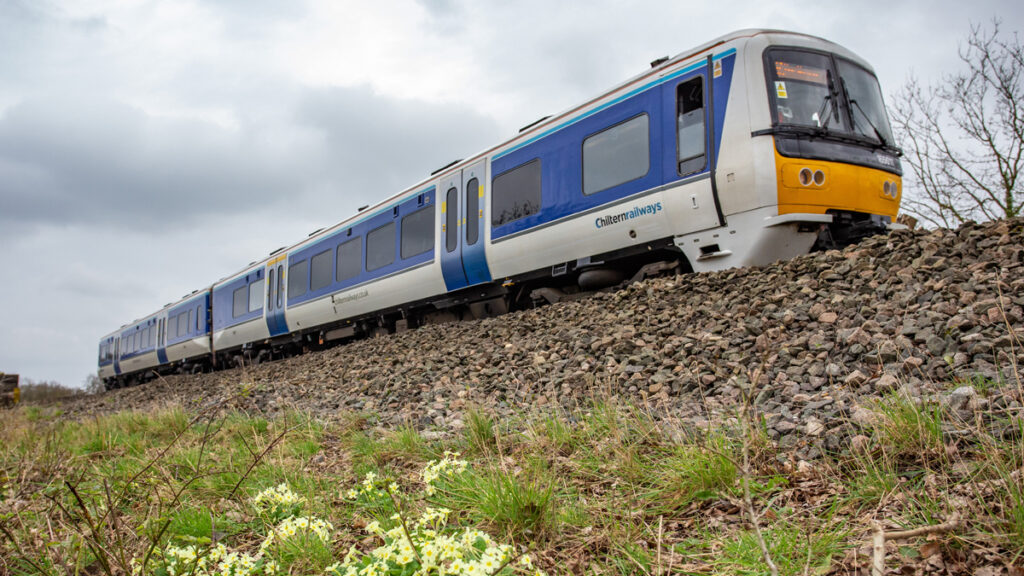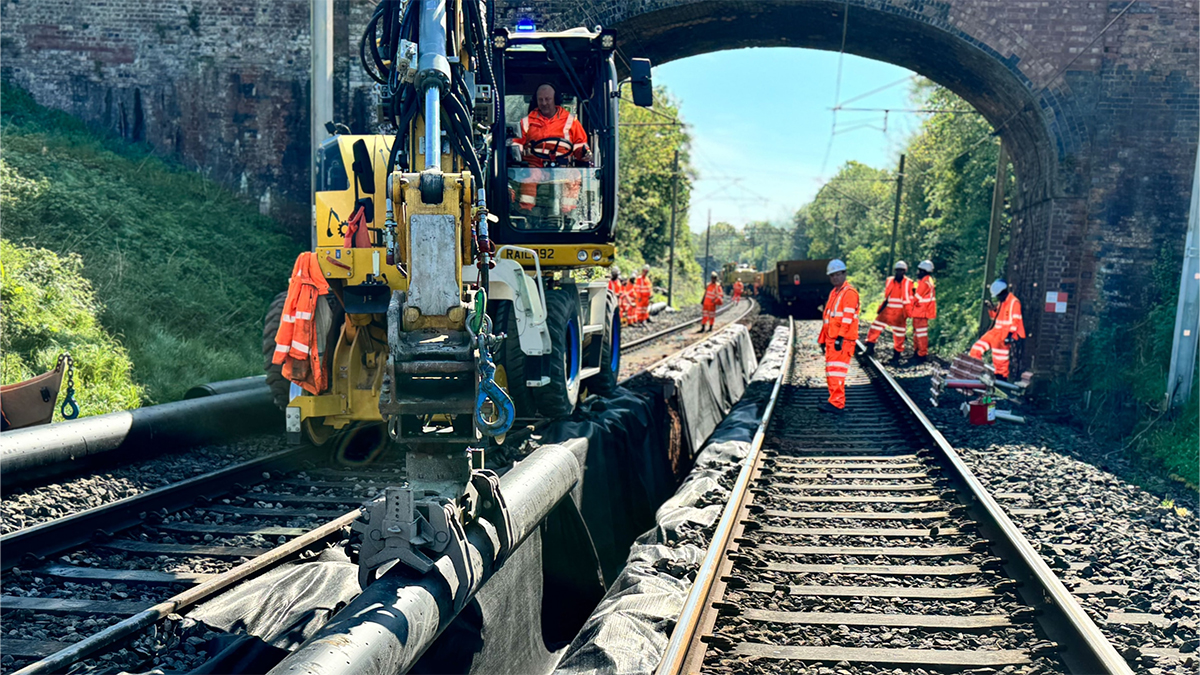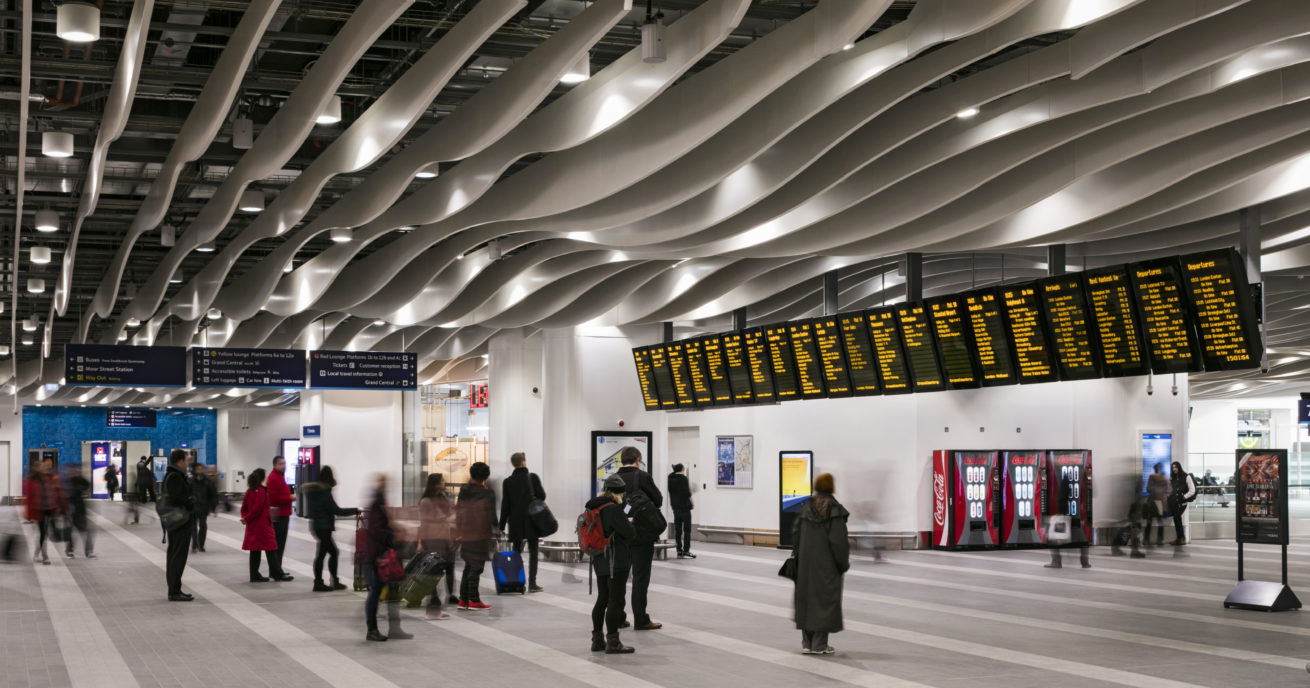Heavy rain can severely impact the railway and affect your journeys.
The severe weather we’ve experienced recently is a reminder of the scale of disruption days of heavy rain can cause. We’re sorry for the delays to your journeys and are working hard to keep you and our railway safe when this happens.
Find out how we prepare our railway for it – so we can keep you and freight moving wherever possible.
Damage and delays
Heavy rain can lead to flooding and landslips on our railway. This can sometimes damage our infrastructure and delay your journeys.
We typically slow down trains by using speed restrictions when heavy rain hits. This helps keep you and freight safe while we work around the clock to keep the railway safe and open during heavy rain.
But it can also disrupt your journeys. In 2023 weather-related disruptions caused about 900,000 minutes of delays.
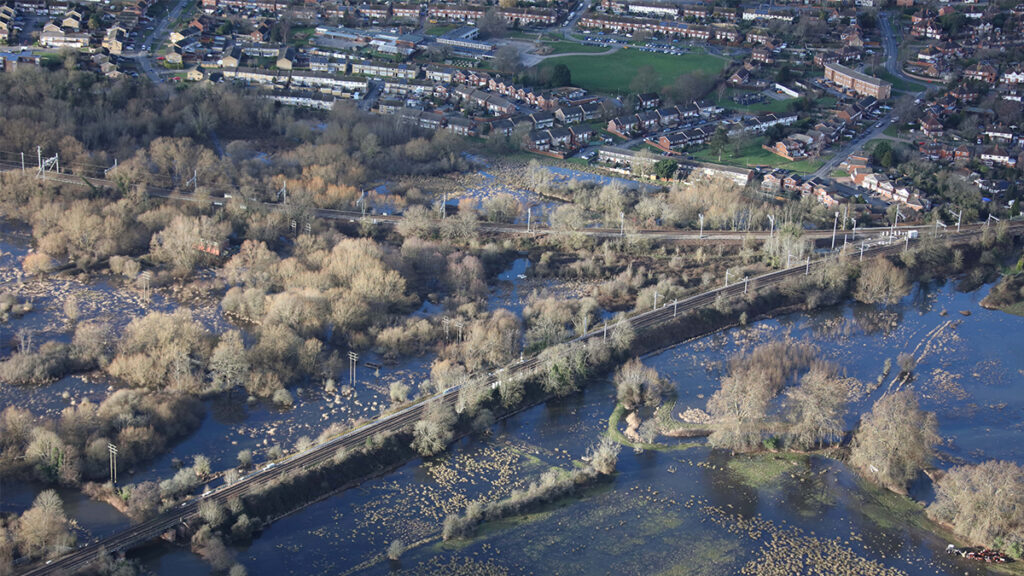
Drainage and resilience
We’re significantly investing in our drainage systems in the next five years. Drainage is vital for helping our railway cope with heavy rain. So, maintaining and upgrading these systems is essential.
For example, we’re building, rebuilding, redesigning and increasing the maintenance of more than 600,000 metres of drains. And we’re recruiting almost 400 extra drainage engineers to help.
We’re also renewing and refurbishing over 300 miles of cuttings and embankments and carrying out maintenance on over 900 miles of track. Track built on cuttings and embankments is often more vulnerable to landslips after heavy rain.
Better weather forecasting
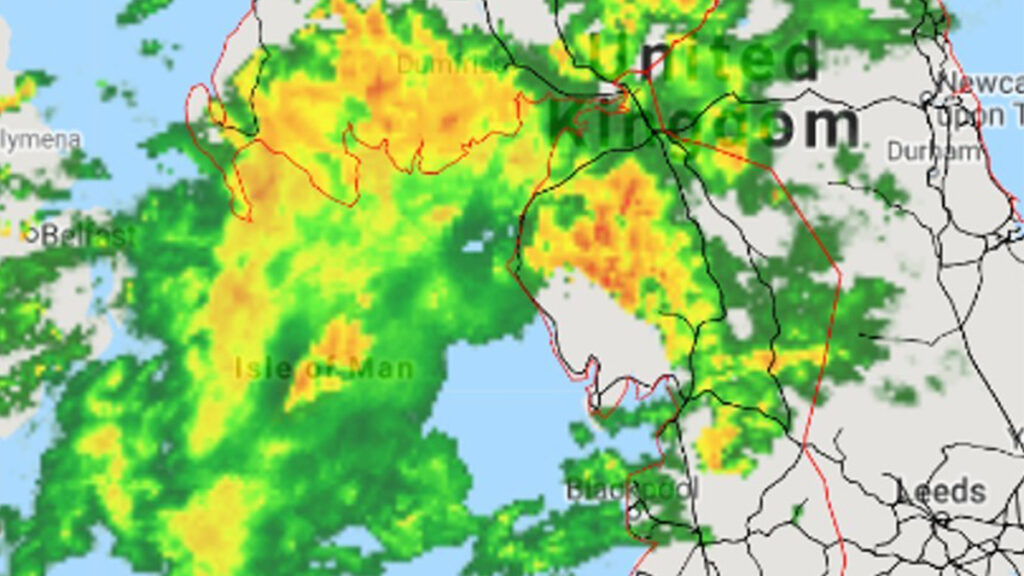
We’re also working with our weather partner MetDesk to develop better forecasts for heavy rain.
We currently have five-day forecasts but we’re looking at lengthening them to seven-day forecasts. We’re also working on creating hourly forecasts for every two kilometres of our railway.
These highly detailed and longer-ranging forecasts will help us better prepare and plan for heavy rain.
Alice Smith, head of Seasonal Weather Resilience at Network Rail, said: “Our changing climate means heavy rainfall is getting more frequent, but with enhanced weather forecasting, we can better identify where rain is going to hit and apply targeted measures to the affected area.
“This minimises the disruption to our passengers and keeps our railway safe and reliable during adverse and extreme weather.”
A new weather tool
We’ve also worked with our industry partner Rail Safety and Standards Board to develop a new tool. PRIMA – or proportionate risk response when implementing mitigating speeds to assets – helps our teams place appropriate speed restrictions on lines during extreme rainfall.
PRIMA calculates and assesses the safety risk of extreme rainfall on our lines and recommends speed restrictions accordingly. We can even safely increase the speed of trains in some instances thanks to PRIMA.
We’ve trialled PRIMA since last year and the results are promising. PRIMA helps us apply more targeted speed restrictions so we can keep you moving wherever possible.
